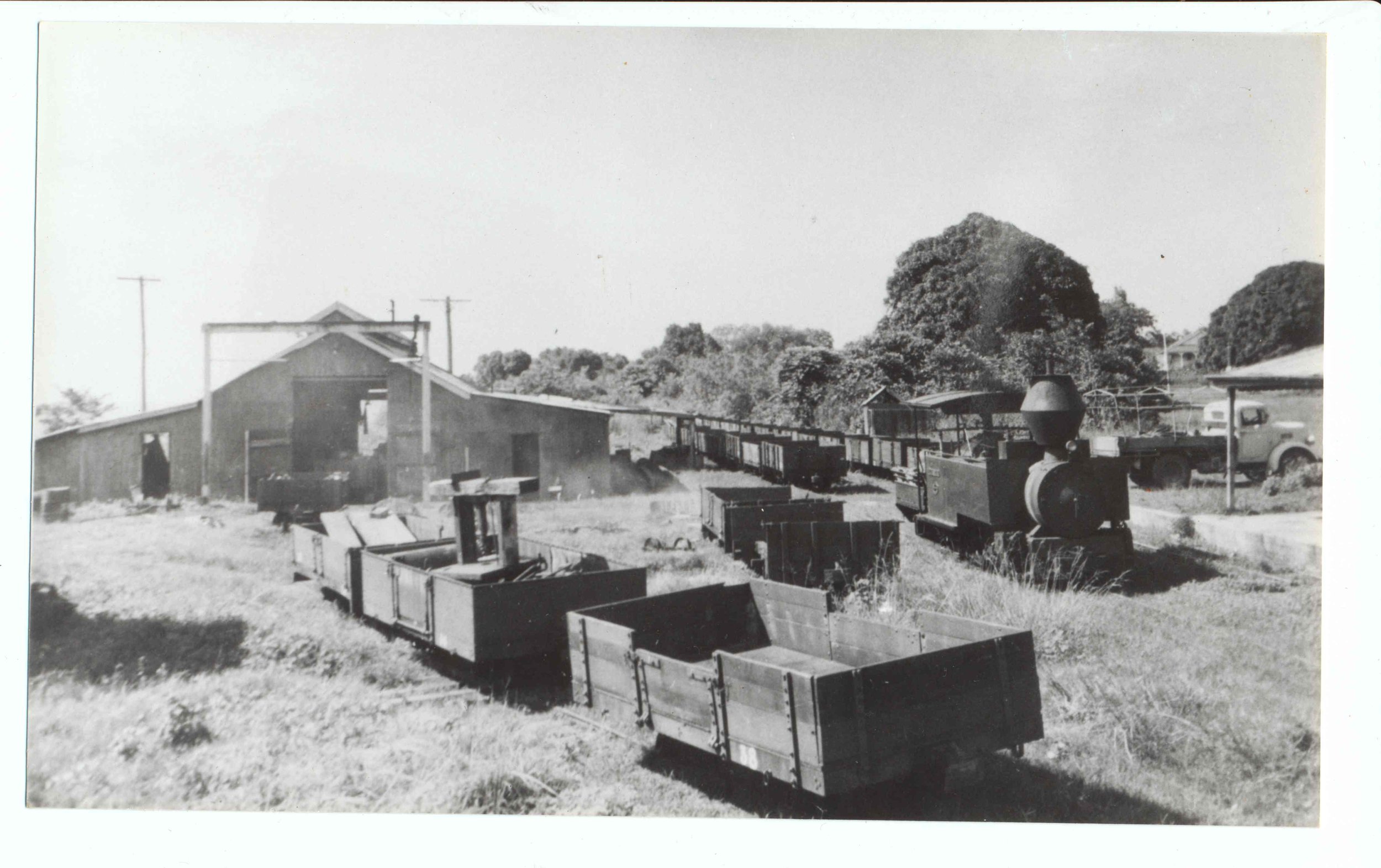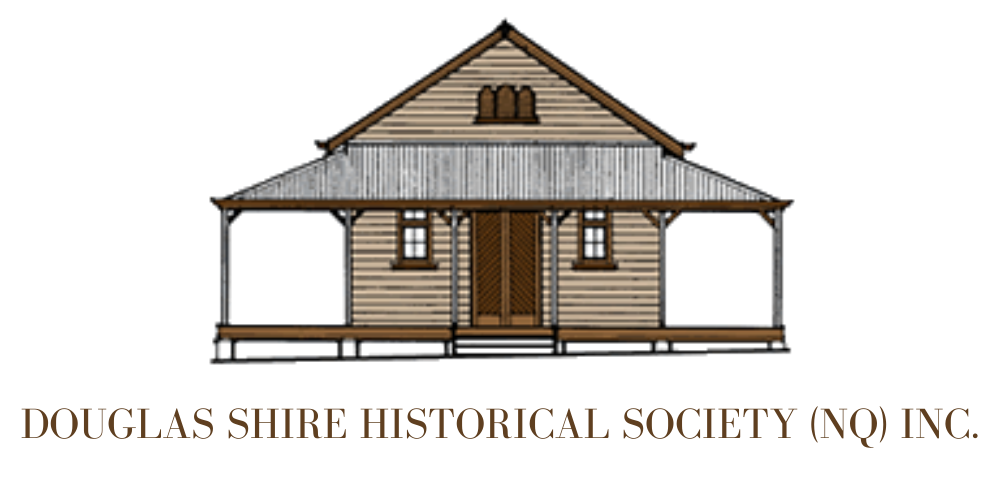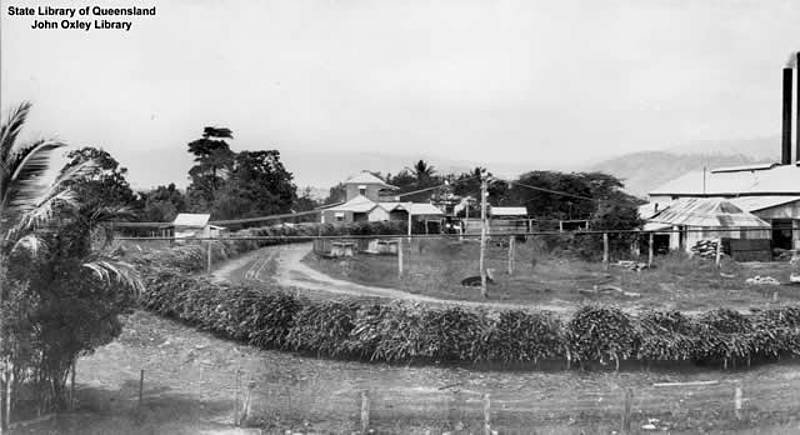History of Sugar Cane in the Douglas Shire
Sugar cane was introduced to Australia by the First Fleet in 1788. However, early attempts to grow sugar cane around Sydney Cove, Port Macquarie and Norfolk Island were unsuccessful. It wasn't until the 1860s that a viable sugar cane plantation and raw sugar mill was established at Ormiston, near Brisbane, by Captain Louis Hope.
By the 1880s, cane lands were being developed further by Queensland's tropical coast and along the northern coast of New South Wales. However, the high cost of wages for Australian workers made it difficult for the industry to compete successfully with overseas sugar producers such as Fiji, Java (Indonesia) and South Africa.
To overcome this problem, cheap "contract" labour was brought in from the South Pacific islands, particularly Vanuatu, then known as New Hebrides. Between 1863 and 1904, more than 60,000 Kanakas as they were called were brought to Queensland to work on sugar plantations, some illegally through a process known as "blackbirding". This involved Europeans luring islanders onto ships by pretending they wanted to trade with them. Instead, they would kidnap the Kanakas and ship them to Australia where they were forced to work on the sugar cane plantations and live under very poor conditions.
Farmers' Cooperative Mill, Mossman, Queensland, c1930.
It was thought that Englishmen’s fair skin was not suited to working under the hot sun.
In the late 1880s regulations were introduced to control the recruitment of Kanakas and by 1908 many of the Kanakas had been returned to their homelands, although some stayed in Australia.
However, the need for labour on the cane fields continued and in the early 1900s a new type of canecutter entered the industry. These were young European migrants who came to Australia to "make their fortune" on the cane fields. Italians in particular contributed to the growth of the Australian sugar industry with large numbers being brought to Australia as canecutters in the mid-1950s.
As they became successful, they pooled their money to buy a farm, then another, and Italians and Croat families are still the backbone of the sugar industry.
Mossman has the most northerly sugar mill in Australia. Sugar was first grown in the area in the 1880s.
Dan Hart, thought to be the first non-indigenous settler in Mossman, had come from Jamaica where he had some experience with sugar cane growing. However, the lack of a sugar mill made its cultivation impractical in the 1870s.
By the late 1880s the sugar boom had reached the Port Douglas area and large tracts of land in the Mossman Valley were taken up for cane growing over the ensuing years.
A small sugar mill valued at 9,000 pounds was established on Brie Brie estate adjoining Dan Hart’s and Tom Wilson’s selections in 1883 by wealthy Melbourne investor Mrs Harriet Parker, with the first crushing in 1884. However a fall in the market price of sugar saw the mill close in 1888. Tenders were called to purchase the estate which was put into liquidation.
In 1895, Thomas Crawford and the Muntz brothers from Victoria took over management of the plantation. The new owner was Henry Robert Dyason, a Brisbane manufacturer of Canon jam. Crawford and the Muntz brothers bought the property in 1896 with equal shares. George Muntz became manager of the Muntz half and was a director of the Mossman Central Mill Board for 16 years.
In 1893 farmers Messrs J.D. Johnston, John Pringle, John Wofleben, Denis O’Brien, Robert Tunnie, E.W. Spon, James Rose, Thomas Wilson, Mr Kent, Daniel Hart and R.O. Jones met at the Masonic Hall in Port Douglas to form the Mossman River Central Mill League. J.D. Johnston was elected Chairman and R.O. Jones secretary. The League eventually became the Mossman Central Mill Company Ltd.
After repeated approaches to the State Government, funding was secured for the establishment of a sugar mill on the Mossman River. Work on the mill began on April 27, 1896 and in September the ship Westfield arrived with machinery from Glasgow. It anchored outside Mossman heads and transhipped the cargo up the river in the Callaghan Walsh lighters S.S. Bee and Maggie Logan. Then the equipment was taken from the Thooleer landing on a horse tramway to the mill site, on the especially built tram line.
The mill was ready to operate by the middle of 1897 and crushed its first cane on 23 August from Mrs Annie Rose’s Bonnie Doon. This was a little ahead (a week) of mill completion owing to an inadvertent cane fire.
The crushed sugar was taken by rail to the Thooleer wharf on the Mossman River and from there by lighter to Port Douglas for shipment to Cairns.
A two-foot gauge tram network was constructed to convey cane to the mill. It also carried passengers and freight. At the opening of the mill, the wharf line and the Johnston and Pringle branches were supplying cane, but the Saltwater branch only tapped the southern end of Miallo before crushing ended on Feb 14, 1898.
There were 200 Kanakas cutting cane as well as Chinese. More recruits came in 1899 and 1900.
Between 1885 and 1904 George Low Choy harvested cane in Mossman and supplied labour. He was moved out of the industry by a law passed in 1901 by Mossman Mill preventing Chinese having shares, deciding to pay two shillings less for Chinese cane. There are doubts that the Mossman Mill would have started if the Chinese hadn’t taken the risk to try cane farming
The first season of crushing ended at Mossman Mill on 14 February 1898. There were 33 original suppliers of cane and in the first season 27,905 tons of cane were processed to yield 2965 tons of sugar.
Mossman was the first Queensland Mill to crush more than 100,000 tonnes of cane in a season.
Japanese labour was imported to the cane fields. When they went on strike, Indian labourers were called in, mixing with ‘time expired’ Kanakas and Chinamen.
Japanese workers at the mill went on strike in February 1900 but the problem could not be found. A hospital had been built for them and three barracks. Most were unsuitable to work in the fields and were employed as cooks. One worked in the laboratory. Their agreements were not renewed after 1906 and some took on firewood contracts.
In July 1899 the Sugar Milling Co. commenced rail passenger service from Mossman to South Mossman, a distance of 2 ½ miles. They had purchased a new 0-6-0 tank engine from Fowler and Co which was named “Pioneer” which arrived in March, together with two saloon tram cars which had centre aisles with longitudinal seats facing inwards and seating 20 passengers. Waiting sheds were put at Front Street and South Mossman. The first service provided two trams each way daily. Mill employees were carried free, for others the line was divided into two sections at threepence each.
A Government grant of £22,000 (Pounds) was given in 1900 to build extension to the rail line. The line ran from the Mossman Sugar Mill to the small Tramway wharf in Port Douglas (the present Combined Clubs building) built by the Council.
The Sugar Mill initially provided rolling stock and locomotive, and the line was used for transporting freight, sugar and passengers. The line was officially opened on Aug 1. There was one tram each way daily. The journey time was 74 minutes.
At the start of each season, cane cutters in gangs of up to 8, would sign on to a run (a number of farms) at the Mossman District Canegrowers office after negotiating daily tonnage, conditions and price. As supplies were delivered to gangs, credit was extended and liens on pays signed. It was a big day in town.
Each fortnight, Mossman District Canegrowers Executive would tally the tonnages cut by each gang, deduct expenses incurred (supplies, ambulance etc) and pay the cutters by cash in the paddocks. The paymaster would be accompanied by an armed police escort.
Disputes would arise between farmers and cutters over the condition of cane. If the Mill Cane Inspector could not resolve the issue, the dispute would be heard by an Industrial Tribunal, formed by the local Stipendiary Magistrate, his Clerk and representatives of both sides, in the paddock. This was a formal court in an informal setting and all court procedures were adopted. The Magistrate would give his verdict and cutting would continue.
In 1901 Rev. J Prowse reported;
The aggregate amount of cane crushed this season is about 51,000 tons, averaging 2000 tons per week, which at the rate of 8 1/2 tons of cane to the ton of 88 (N.T.) sugar, makes a record output for the Central Mills of the colony, a result upon which the settlers of the Mossman are to be congratulated, especially when one remembers that all this has been achieved within the short space of six years. The raw sugar produced at the mill this season, 6000 tons, has been of a very special quality, as testified to by the refineries. The mill is under the capable management of Mr F. H. Wiseman who has in different kinds of employment, about 106 European workmen under his charge, all of whom are comfortably housed and well fed.
In 1904 the Douglas Shire Council obtained a government grant of £5000 (pounds) for the construction of a new larger wharf at Port Douglas to handle general cargo and later for the storage and shipment of bagged sugar. They also built additional sidings and sheds. The timber wharf was built at the end of a stone-pitched approach and a storage shed was erected on the wharf, the terminus of the railway line from Mossman. This was later known as Fisherman’s Wharf and then Ben Cropp’s Shipwreck Museum. The passenger timetable increased to three trips daily with one trip on Sundays. The wharf opened in 1905. Now it is called the Sugar Wharf.
Train loads of cut sugar cane outside a Mossman mill, Queensland, c1925. State Library of Queensland.
Until the mid 70s hand cutting was still being used on some farms and it was back breaking work. First the cane was burnt to help rid vermin, portable tracks were laid by hand to bring the tramway trucks closer to the cut cane. Cane was then topped on the ground. A cutter would pick up a bundle of stalks, put them on his shoulder, walk to the truck, climb a 3-4 step ladder and place the stalks on the truck. All for 14 to 16 shillings per ton loaded. And up to 10 tonnes per day in the late 60s. In 2001, 90% of the cane was cut green by machines at rates of up to 100 tonnes per hour.
During the 1950s, the sugar industry boomed and dramatic changes were taking place within Queensland. In 1954, bulk handling of raw sugar was introduced into Australia replacing bagged sugar, and mechanical cane harvesters gradually began to replace manual labour in the fields.
1958 saw the end of bagged sugar being shipped from Mossman Mill to Port Douglas wharf and then by ship to Cairns, and road transport directly from the mill began with bulk sugar. The ‘sugar lumpers’ at the wharf were out of a job.
By the late 1960s, more than 85% of Australian sugar crops were mechanically harvested. In 1979, Australia achieved 100% conversion to mechanical cane harvesting.
Early computers were prohibitively expensive, so In 1967 the first Mossman application had been brought on line at the IBM data centre in Brisbane, with punched tape being flown from the mill and printouts being returned by air.
As computer prices fell, Mossman Mill bought their first computer in 1971 and an IBM 1800 process control computer was installed. It was the first sugar mill worldwide to use computer managed process control.
It was the first Australian mill to adopt ‘big bins’ for road and rail transport, and elevating tippers for filling these 10 tonne “canetainers’ in field.
It was in the first Australian sugar industry to use two-way radio communications between its cane traffic control, locomotives and harvesters.
And the first to open its operations to tourism.
Other achievements include the Quaid front end loads, developed by George Snr & Jnr.
Today, the Australian sugar industry is internationally regarded as one of the most efficient sugar producers in the world and a leader in mechanical cane harvesting and bulk handling of raw sugar.
References:
Douglas Shire Centenary of Federation Community Celebration, 1 September 2001 Souvenir Booklet
Northern Outpost by John Kerr (First edition 1979, Second edition 1995)




